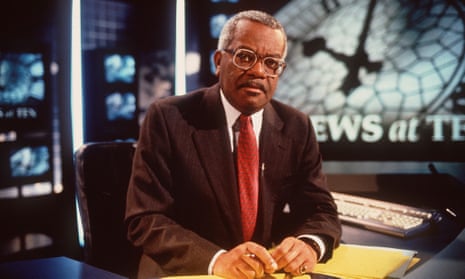Good morning, and here is the news: an authoritative new academic report has revealed that many fewer of you out there are still watching this sort of BBC bulletin. And that you’re ageing fast. Indeed, researchers at the Reuters Institute at Oxford University have calculated that in many cases consumption rates of standard TV news are falling more quickly than print newspaper readership.
In recent years, they point out, the average age of the BBC1 audience has grown by more than one year every year, from 52 in 2009 to 59 in 2014. The average reader of the print edition of the Daily Mail is younger than the average BBC1 viewer.
No, of course you won’t have seen or heard any such thing on some public service news broadcast. Broadcasters’ riff about the death of newspapers amid digital carnage is standard stuff; the facts about television viewing – especially news viewing – emerge more elliptically, if at all. We hear about TV triumphs: audience figures for The Night Manager (starring Tom Hiddleston, pictured), astronomic ITV profits, the proliferation of channels. But essential messages concerning the medium itself don’t seem to make it air quite so easily.
Yet it’s actually the facts of challenge and decline that make “What is happening to TV News?” by Rasmus Kleis Nielsen and Richard Sambrook so interesting. Solutions come thin on the ground. At the moment, apparently, “there is no one clear way forward”. But there’ll never be ways forward – clear or misty – unless the dimension of the problem registers completely.
“In the UK, the average number of minutes of television viewing for the population as a whole declined from a high of 241 minutes per day in 2012 to 216 minutes per day in 2015, a 10% decline in three years”, the report says. “And the percentage of households in the UK that have a television set has declined for the first time ever. The decline in viewing time for US adults was about 15% in the same period.
“Compounded over 10 years, annual declines of 3 to 4% will result in an overall decline of 25 to 30%. This would be a more severe drop than the decline in print newspaper circulation in the UK or US from 2000 to 2009 – in both cases about 20%.” And just look at the generational split involved here. “By 2014, the average number of hours of television news watched in the course of the year was down to 108 for all adults. For people aged 16–24, the number was 25 hours. The figures for younger viewers have declined every year since 2010, while those for viewers over 55 have remained more stable. The loyalty and habits of older viewers prop up overall viewing figures and risk obscuring the fact that television news is rapidly losing touch with younger people.”
It’s the same story right around the western world. German and French news audiences are sliding in parallel. “The remaining audience is also, like print readers, increasingly older than the population at large. In 2015, the median age for viewers of Fox News in the US was 67, MSNBC, 63, and CNN, 61.9”. Cue Facebook and Twitter, YouTube and Snapchat instead. Cue the elephantine impact of Netflix and Amazon Prime. The news as we knew it is fading away. Thank you Fiona and Huw. It’s goodnight from him and it’s goodnight from her…
The real problem, moreover – one faced by print papers over the last 20 years or so – is that answers flow much more uncertainly than diagnoses of despond, because the technology never stands still. Sambrook (a former head of BBC News himself) knows that well enough. Look up today and see the Daily Mail in takeover discussions with Yahoo, Facebook referrals falling 20% in a month, Gawker rocking and rolling for survival, Mashable laying off staff, BuzzFeed missing its targets.
The question for the standard bulletin providers at the BBC, ITV and C4 is whether and how to cope with profound change that stretches resources and investment strategies to breaking point and beyond. Take the full video/youth tablets offered here and you may find you’ve alienated the older audience who paid your wages while missing the bus to where the next young audience has gone. Is Netflix the future – or, when you examine the frailness of its cost controls, a passing phenomenon, to be replaced by another? Will 150 million subscribers in 2020 look imposing, or just a little stretched? The trouble for newspaper people has long been three words of simple admission: “I don’t know.” Try reading that at six o’clock and ten the next time around.

